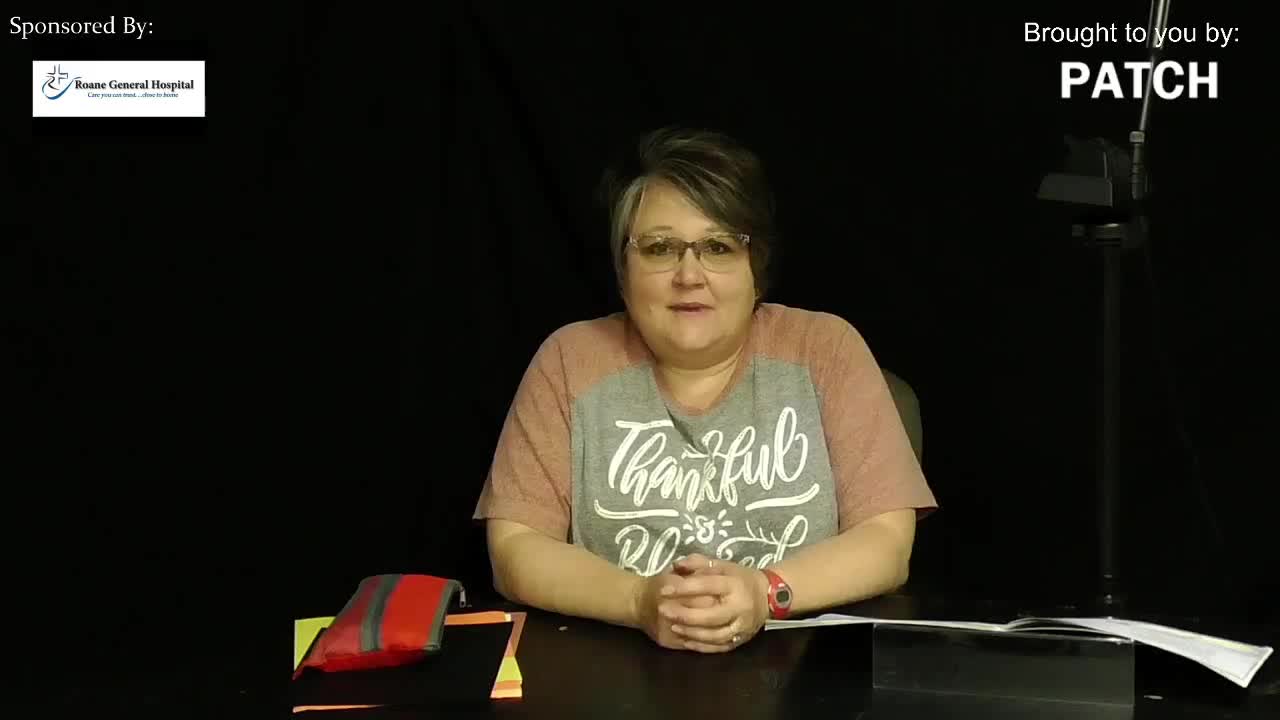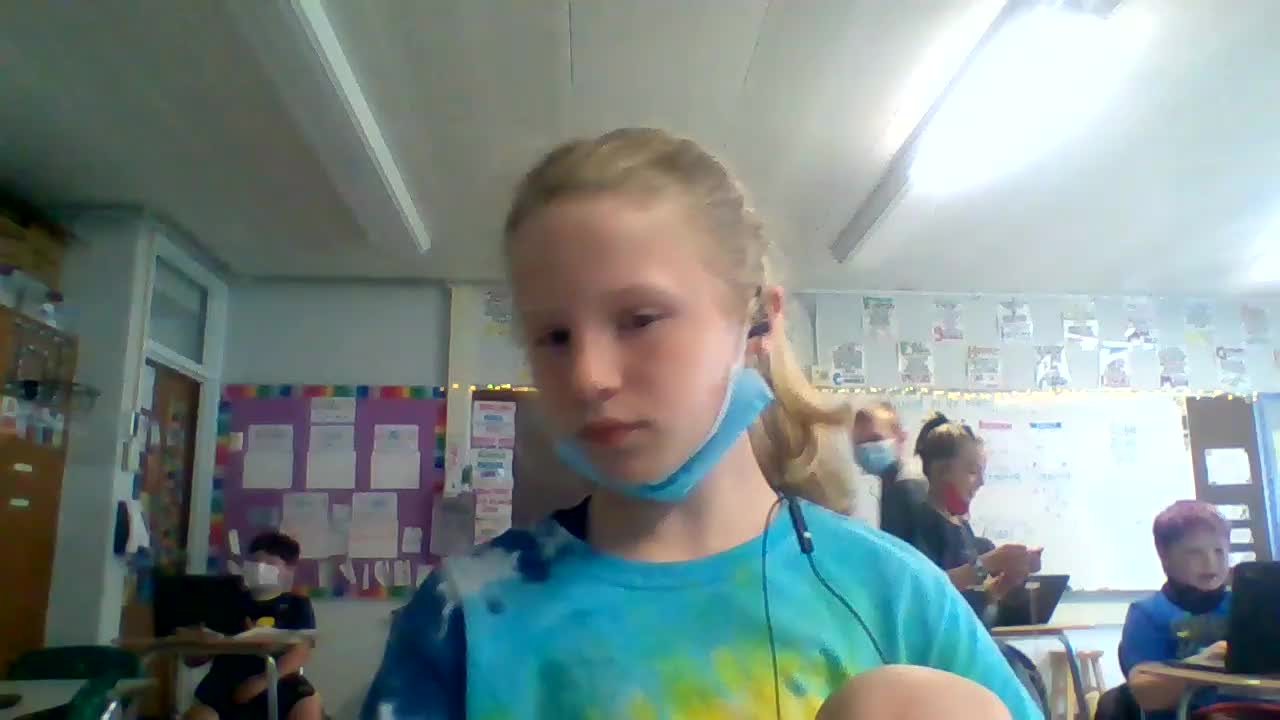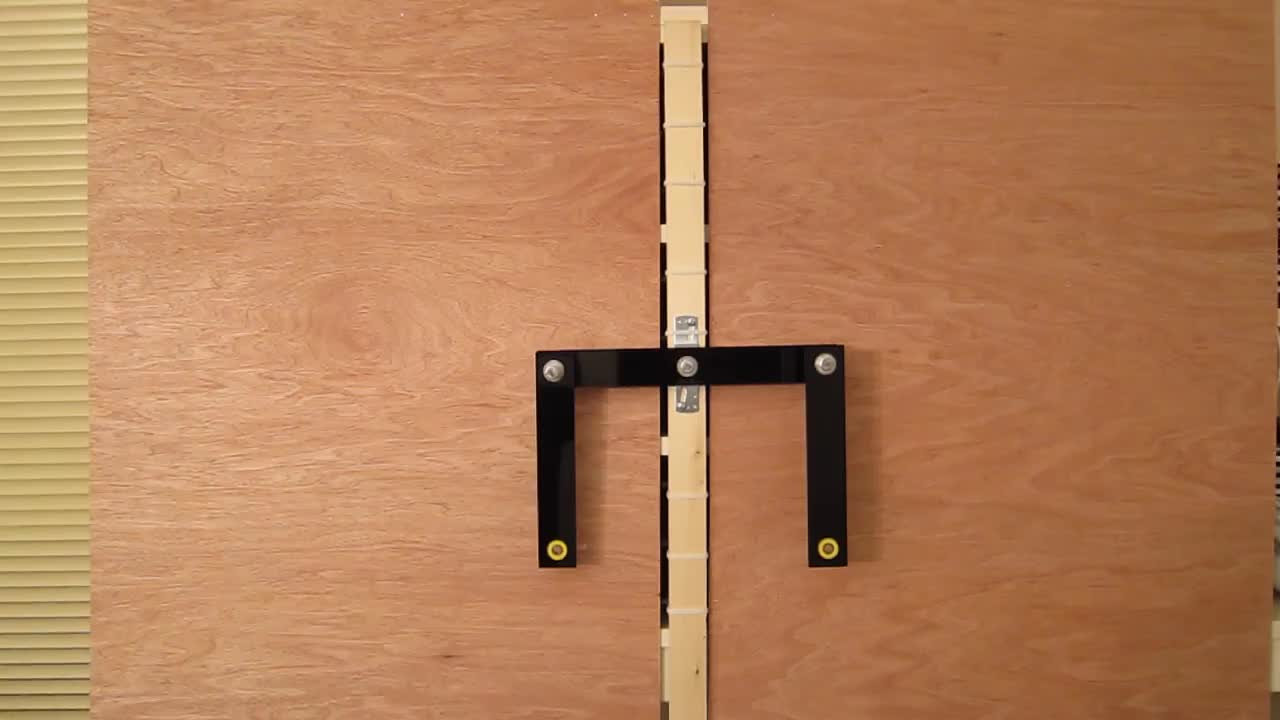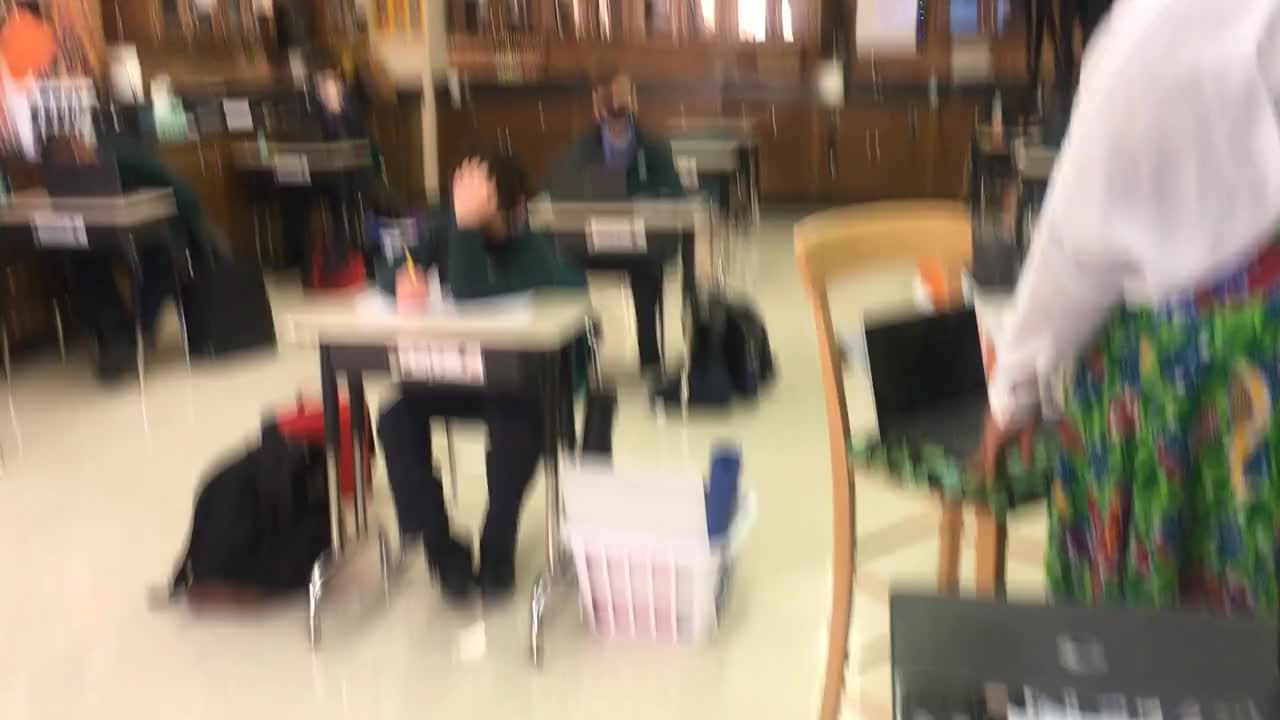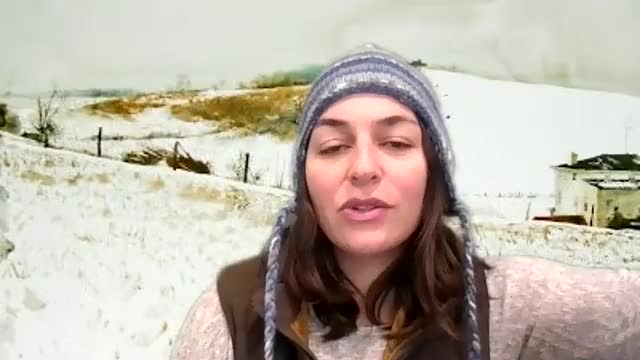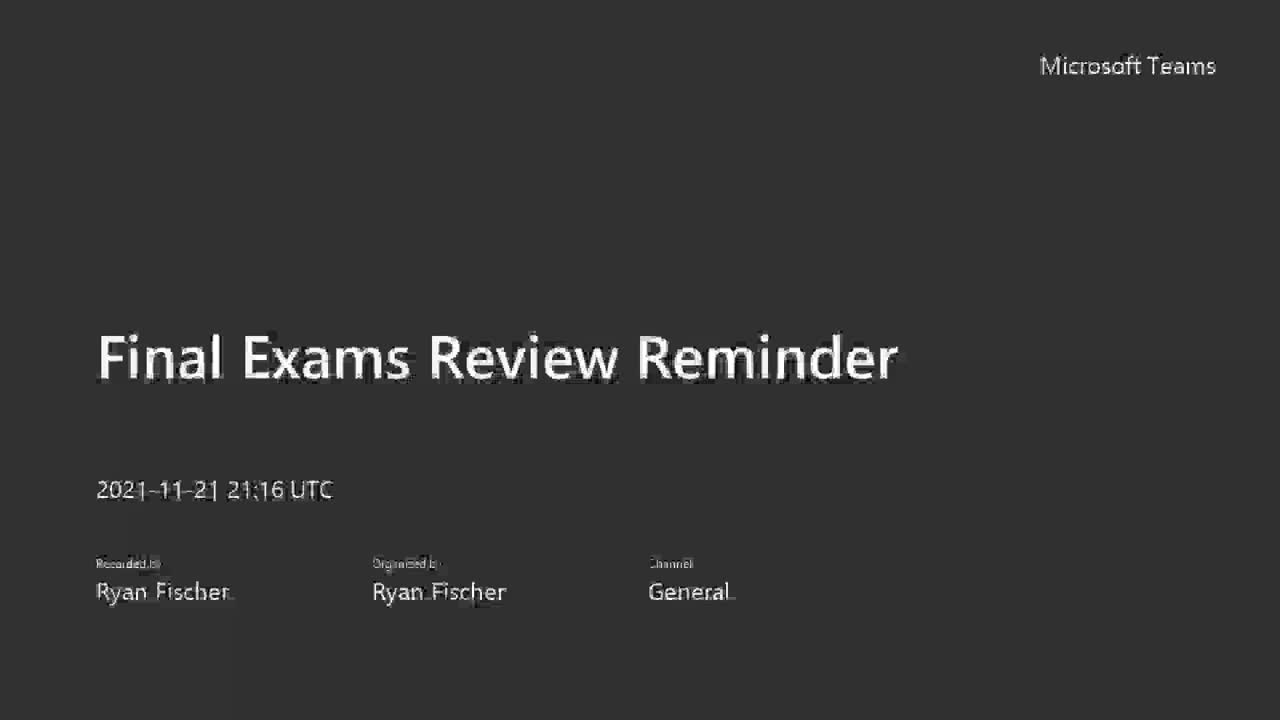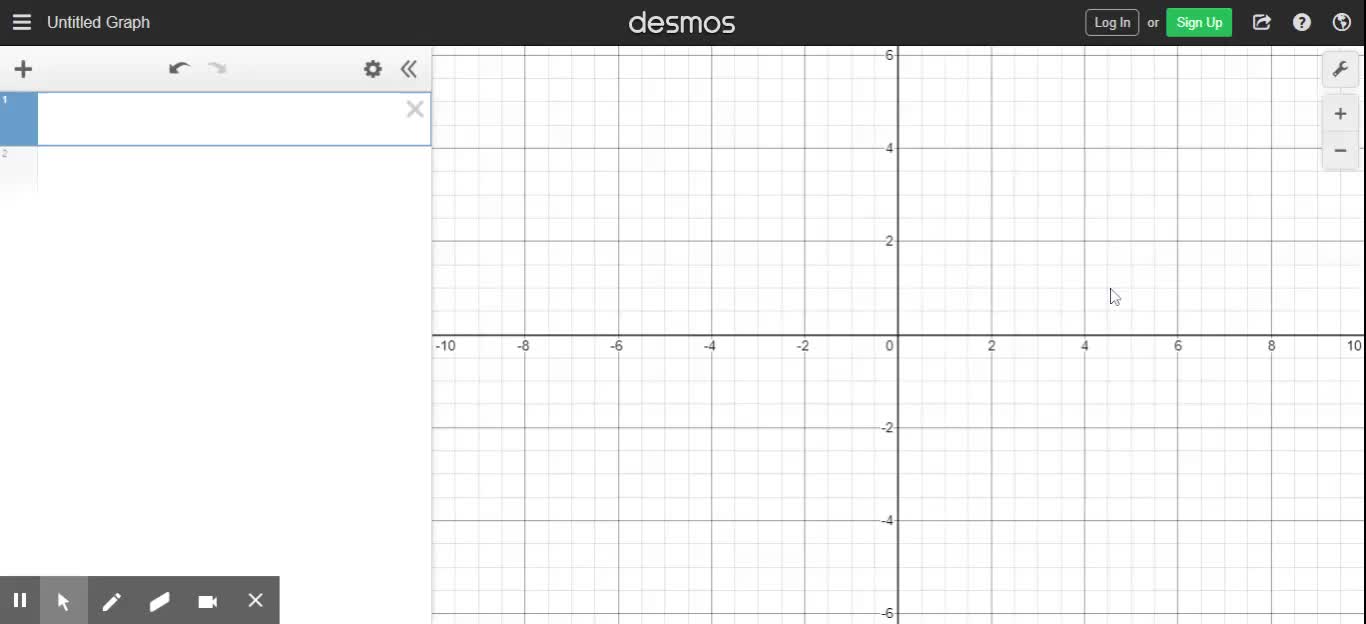Telling Stories With Novel Effect
High School / Fine Arts / Design
In this video, we show students how to craft stories that work well with sound design.
Hello soundscapers! I?m Matt and this is Eric.
Hello.
And today we?ll discuss how to write stories with novel effect in mind.
That?s sounds great!
Well, thank you. We?re looking forward to it.
Two super important parts of the story are the character and the setting. I went ahead and made two examples for us to read. The first one - There once was a giraffe in the library, looking for a sesame bagel with cream cheese. And this is great. I love giraffes. I love libraries. And sesame bagels with cream cheese? Delicious! But the problem with this story for novel effect is that these words don?t really speak to our sense of hearing the way that a sesame bagel with cream cheese might speak to our sense of taste.
For example, a giraffe? I?m not really so sure what does that sound like. Do you know, Eric? And a library doesn?t generally supposed to be a quiet places. And finally the sesame bagel with cream cheese is delicious. It?s hard to explain what it sounds though. What do you think? So that?s why we came up with this second example. The monkey crept through the office party, looking for a sizzling portabello barbeque. And the reason why I like this one so much for a story with novel effect is because it speaks to our sense of hearing. All these nouns and verbs you can hear. For example, monkey, everyone knows what that sounds like. And an office party, you can picture tons of sound like printers, telephones, people singing happy birthday, an elevator opening. And finally that sizzling portabello barbeque that monkey is looking for? I can hear the grill going already. And one last thing that I like about this example is this verb right here - crept. It tells me how the monkey is feeling in the situation. He?s not just looking for the portabello barbeque, he?s sneaking around trying to find it. Maybe to enjoy it all to himself. And if I have this information I can use that to tell me how I should play the monkey noises if I?m the voice actor. So I might be a little quieter.
So here?s another example. We came up with this situation. Shyanne tossed and turned in bed because her neighbors were loud. Not bad. Here?s what we did to spruce it up a little bit. Shyanne banged on the wall because her neighbours left their ice cream truck running inside. Now in this second example you can see it?s much more specific than the first example. So in this one tossing and turning isn?t a very clear sound. If you heard it you might not know what it is. Same with neighbors being loud. You know that bits, it could be just some loud noises. In this version, it?s much more specific. She?s banging on the wall. That?s a very specific sound. We all know what that sounds like. And left their ice cream truck running inside, well, we all know what an ice cream truck sounds like. We can imagine maybe what it might sound like in someone?s bedroom. So there you go.
Here?s another example. Pat Thorner was so cold that his teeth were chattering. Sorry, Pat. Let?s try this. Pat Thorner felt frozen. His teeth clacked like a typewriter. And now when you hear that teeth clacking sound it?s nice that you have something to compare it to. But if we wanted to go a step further - Pat Thorner?s eyelashes had frost on them, and his flippers were frigid. So the reason I like this example is because even though it describes how cold Pat Thorner is, never said anything about his teeth, but when we hear the teeth tattering sound we can tell exactly what it is because of the context.
And here?s one final example. Oscar watched as the airplane flew above him. Not bad. We?re gonna spruce it up a little bit here. Oscar watched with huge eyes as the airplane roared above him. Here we have these words, huge and roared. Huge, maybe that informs the voice over for Oscar, instead of just being like, ?Oh look an airplane!? he might be like, ?Woah!?And the same with the airplane sounds. Instead of just the sound of an airplane flying overhead, we have the sound of a huge jumbo jet flying really low overhead, really loud. And that would go really well with Oscar going,?Woah!? So that give a different kind of vibe to the story. Maybe makes it a little bit more exciting. And makes us relate to Oscar more.
Now I?m going to show you a third example of the same thing. This one?s different. It?s not necessarily better than the second example. It?s just different. Oscar admired the sights in the sky, wishing he had wings too. This one we don?t ever say anything about an airplane. So how do we know that he?s looking at an airplane? Well we can use novel effect by putting in a sound of an airplane there. And that?s a great way to use novel effect. So if you wanna do this style, you can do that. But if you prefer using more colorful text to describe things and then repeat the same sound you just heard, you can do that too.
We hope you are excited to write some stories for novel effect. See you at story. Chime!
Yeah, that was funny.
Thanks!
Hello.
And today we?ll discuss how to write stories with novel effect in mind.
That?s sounds great!
Well, thank you. We?re looking forward to it.
Two super important parts of the story are the character and the setting. I went ahead and made two examples for us to read. The first one - There once was a giraffe in the library, looking for a sesame bagel with cream cheese. And this is great. I love giraffes. I love libraries. And sesame bagels with cream cheese? Delicious! But the problem with this story for novel effect is that these words don?t really speak to our sense of hearing the way that a sesame bagel with cream cheese might speak to our sense of taste.
For example, a giraffe? I?m not really so sure what does that sound like. Do you know, Eric? And a library doesn?t generally supposed to be a quiet places. And finally the sesame bagel with cream cheese is delicious. It?s hard to explain what it sounds though. What do you think? So that?s why we came up with this second example. The monkey crept through the office party, looking for a sizzling portabello barbeque. And the reason why I like this one so much for a story with novel effect is because it speaks to our sense of hearing. All these nouns and verbs you can hear. For example, monkey, everyone knows what that sounds like. And an office party, you can picture tons of sound like printers, telephones, people singing happy birthday, an elevator opening. And finally that sizzling portabello barbeque that monkey is looking for? I can hear the grill going already. And one last thing that I like about this example is this verb right here - crept. It tells me how the monkey is feeling in the situation. He?s not just looking for the portabello barbeque, he?s sneaking around trying to find it. Maybe to enjoy it all to himself. And if I have this information I can use that to tell me how I should play the monkey noises if I?m the voice actor. So I might be a little quieter.
So here?s another example. We came up with this situation. Shyanne tossed and turned in bed because her neighbors were loud. Not bad. Here?s what we did to spruce it up a little bit. Shyanne banged on the wall because her neighbours left their ice cream truck running inside. Now in this second example you can see it?s much more specific than the first example. So in this one tossing and turning isn?t a very clear sound. If you heard it you might not know what it is. Same with neighbors being loud. You know that bits, it could be just some loud noises. In this version, it?s much more specific. She?s banging on the wall. That?s a very specific sound. We all know what that sounds like. And left their ice cream truck running inside, well, we all know what an ice cream truck sounds like. We can imagine maybe what it might sound like in someone?s bedroom. So there you go.
Here?s another example. Pat Thorner was so cold that his teeth were chattering. Sorry, Pat. Let?s try this. Pat Thorner felt frozen. His teeth clacked like a typewriter. And now when you hear that teeth clacking sound it?s nice that you have something to compare it to. But if we wanted to go a step further - Pat Thorner?s eyelashes had frost on them, and his flippers were frigid. So the reason I like this example is because even though it describes how cold Pat Thorner is, never said anything about his teeth, but when we hear the teeth tattering sound we can tell exactly what it is because of the context.
And here?s one final example. Oscar watched as the airplane flew above him. Not bad. We?re gonna spruce it up a little bit here. Oscar watched with huge eyes as the airplane roared above him. Here we have these words, huge and roared. Huge, maybe that informs the voice over for Oscar, instead of just being like, ?Oh look an airplane!? he might be like, ?Woah!?And the same with the airplane sounds. Instead of just the sound of an airplane flying overhead, we have the sound of a huge jumbo jet flying really low overhead, really loud. And that would go really well with Oscar going,?Woah!? So that give a different kind of vibe to the story. Maybe makes it a little bit more exciting. And makes us relate to Oscar more.
Now I?m going to show you a third example of the same thing. This one?s different. It?s not necessarily better than the second example. It?s just different. Oscar admired the sights in the sky, wishing he had wings too. This one we don?t ever say anything about an airplane. So how do we know that he?s looking at an airplane? Well we can use novel effect by putting in a sound of an airplane there. And that?s a great way to use novel effect. So if you wanna do this style, you can do that. But if you prefer using more colorful text to describe things and then repeat the same sound you just heard, you can do that too.
We hope you are excited to write some stories for novel effect. See you at story. Chime!
Yeah, that was funny.
Thanks!

